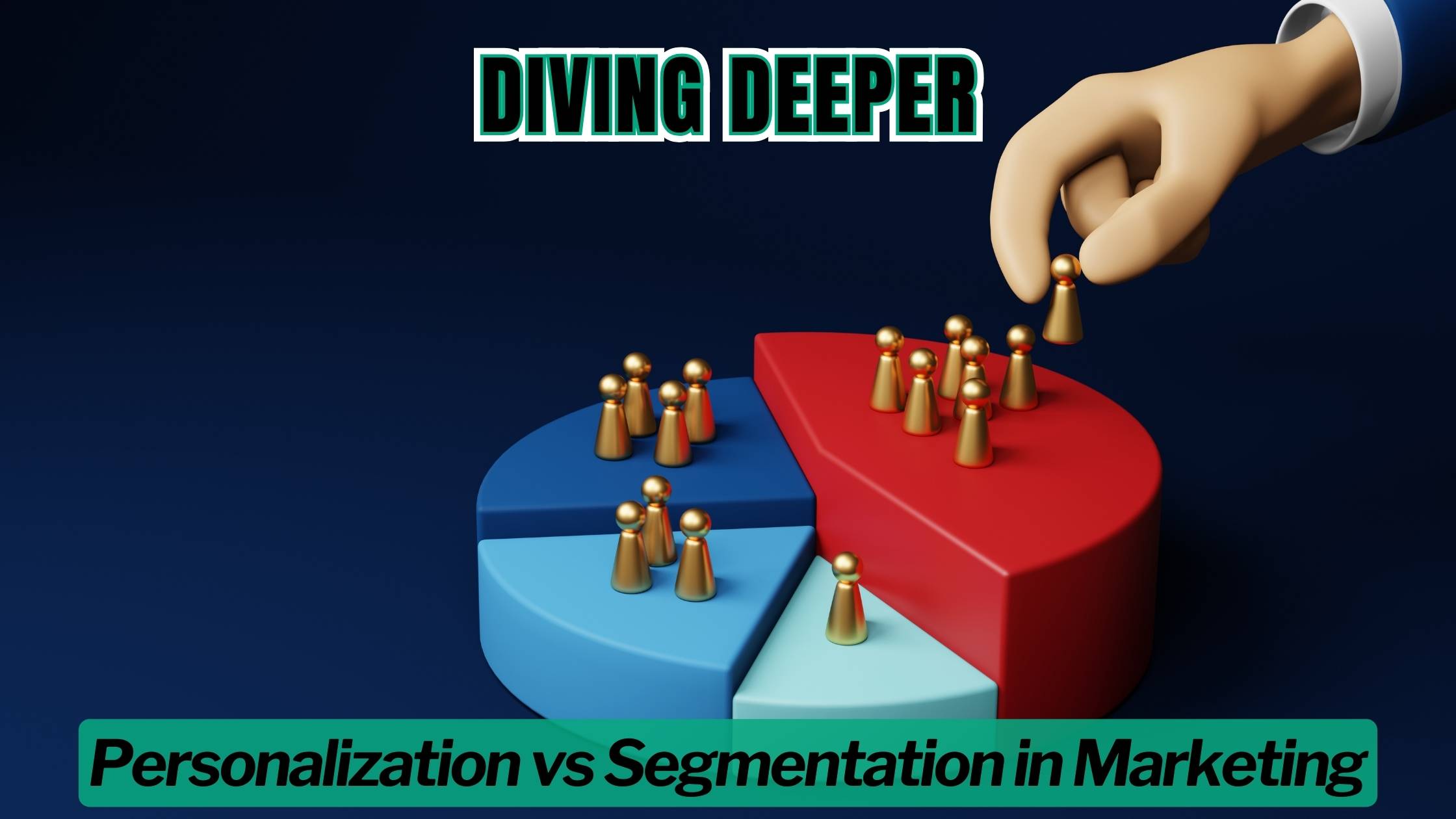Diving Deeper: Personalization vs Segmentation in Marketing
- Conversational Marketing Software SEO Software Affiliate Marketing Software Marketing Tools


Diving Deeper: Personalization vs Segmentation in Marketing
In the dynamic landscape of marketing, personalization and segmentation have emerged as powerful strategies for engaging audiences, driving conversions, and fostering long-term customer relationships. While both approaches aim to deliver targeted messaging and experiences, they operate on distinct principles and methodologies. In this comprehensive guide, we’ll explore the nuances of personalization and segmentation in marketing, dissecting their differences, benefits, and implementation strategies.
Understanding Personalization and Segmentation
Personalization involves tailoring marketing messages, content, and experiences to individual users based on their unique preferences, behaviors, and characteristics. It aims to create a customized and relevant interaction at every touchpoint of the customer journey, enhancing engagement and satisfaction. Personalization leverages data-driven insights, such as past purchase history, browsing behavior, and demographic information, to deliver targeted content and recommendations.
Segmentation, on the other hand, involves dividing a target audience into distinct groups or segments based on shared characteristics, interests, or behaviors. Rather than focusing on individual preferences, segmentation categorizes users into broader segments to deliver tailored messaging and offers to each group. Segmentation strategies may include demographic segmentation, geographic segmentation, psychographic segmentation, or behavioral segmentation.
Differentiating Personalization and Segmentation
While personalization and segmentation share the common goal of delivering targeted marketing efforts, they differ in scope, granularity, and execution:
- Scope: Personalization operates at the individual level, catering to the unique needs and preferences of each user. Segmentation, on the other hand, targets groups or segments of users with shared characteristics or behaviors.
- Granularity: Personalization offers a high level of granularity, allowing marketers to tailor messaging and experiences down to the individual level. Segmentation provides a more generalized approach, focusing on commonalities among groups of users.
- Execution: Personalization requires robust data collection and analysis capabilities to deliver hyper-targeted content and recommendations. Segmentation relies on predefined criteria or variables to divide the audience into distinct segments, which can then be targeted with relevant messaging and offers.
The Benefits of Personalization and Segmentation
Both personalization and segmentation offer significant advantages for marketers seeking to enhance the effectiveness of their campaigns and improve customer engagement:
- Improved Relevance: Personalization and segmentation enable marketers to deliver more relevant and targeted messaging, increasing the likelihood of capturing audience attention and driving conversions.
- Enhanced Customer Experience: By tailoring content and experiences to individual preferences or segment-specific needs, marketers can create a more personalized and seamless customer experience, fostering loyalty and satisfaction.
- Increased Conversion Rates: Personalized and segmented marketing efforts have been shown to generate higher conversion rates compared to generic or mass-targeted campaigns, as they resonate more effectively with the target audience.
Relevant SaaS Products for Personalization and Segmentation
Before delving into the conclusion, let’s explore several relevant SaaS products that can facilitate personalization and segmentation efforts:
- HubSpot: A comprehensive marketing automation platform that offers features for email marketing, lead nurturing, and customer segmentation to deliver personalized experiences throughout the customer journey. Official Website
- Mailchimp: An email marketing platform that provides tools for audience segmentation, campaign personalization, and automated workflows to engage subscribers with tailored content. Official Website
- Salesforce Marketing Cloud: A customer relationship management (CRM) platform that offers segmentation capabilities, predictive analytics, and personalized messaging tools to drive targeted marketing campaigns. Official Website
- Optimizely: An experimentation platform that enables marketers to personalize website content, test different messaging variations, and optimize user experiences based on segmentation data. Official Website
- Segment: A customer data platform (CDP) that centralizes customer data from various sources, allowing marketers to create detailed customer profiles and execute targeted campaigns based on segmentation criteria. Official Website
Conclusion
In the realm of marketing, personalization and segmentation represent two powerful strategies for engaging audiences, driving conversions, and fostering customer loyalty. While personalization focuses on delivering customized experiences at the individual level, segmentation targets groups of users with shared characteristics or behaviors. By leveraging the right combination of personalization and segmentation tactics, marketers can create compelling campaigns that resonate with their target audience and drive meaningful results.
Now, let’s explore how Subscribed.FYI aligns with the themes of personalization and segmentation discussed in this article. Subscribed.FYI serves as a valuable resource for marketers seeking to optimize their SaaS stack and streamline their marketing efforts. By offering insights into a wide range of SaaS tools, including marketing automation platforms, CRM systems, and customer data platforms, Subscribed.FYI empowers users to make informed decisions and enhance their personalization and segmentation strategies. Incorporating Subscribed.FYI into your marketing toolkit allows you to access comprehensive information about relevant SaaS products, compare options, and unlock exclusive deals to maximize the effectiveness of your campaigns.
Relevant Product Links:





